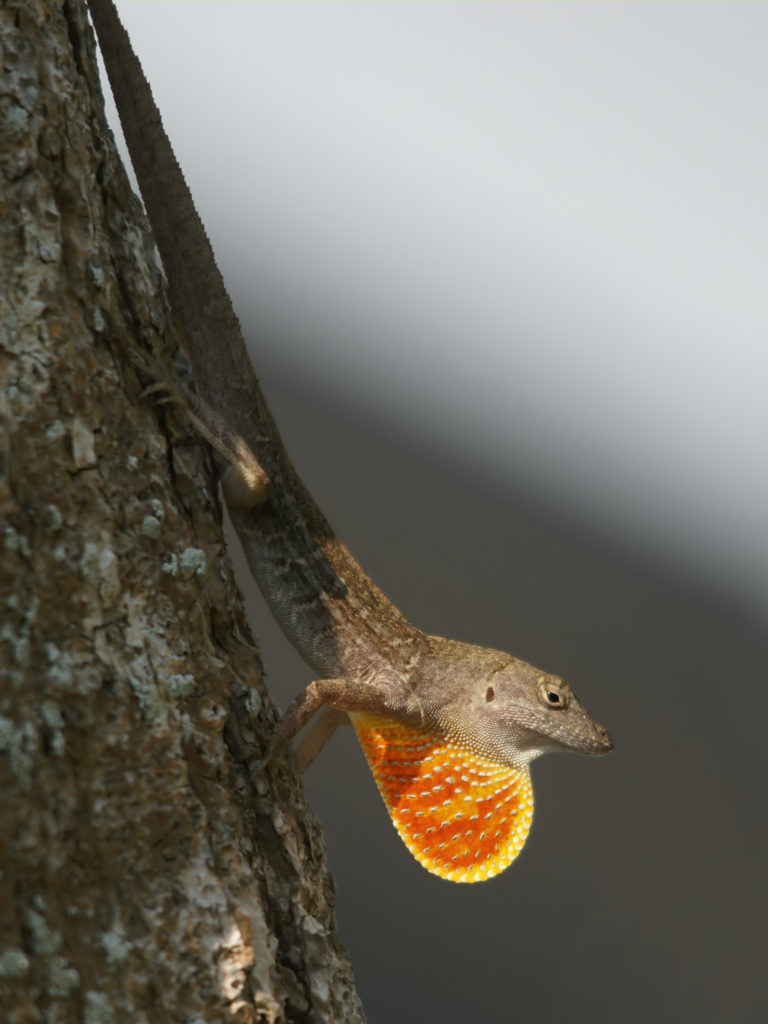Article published in the May 2019 issue of the BSM Beacon and the July 2019 issue of the BSL Heron Herald
Some of you may know that I love busting myths and other commonly held “truths”. Imagine then my delight when I first learned that the tiny brown lizard which I encounter virtually every day in Florida, and which I have always described as a gecko, is in fact not a gecko but an Anole (pronounced “uh-NOLE). A what you say! The Brown Anole (Anolis sagrei) is an invasive species which migrated to Florida from Cuba and has been extraordinarily successful in expanding its territory throughout the state and becoming the most prolific lizard in SW Florida. The Brown Anole can range in color from brown through grey or black but should not be confused with the slightly smaller Green or Carolina Anole which is indigenous to Florida. The Brown Anoles have been putting pressure on the Green Anole population driving them higher into the tree canopies and in some cases displacing them altogether. Brown and Green Anoles of both sexes have a dewlap under their chin which can be inflated when they are challenging another lizard or trying to impress a mate. The Brown Anole dewlap is yellow or reddish-orange. When agitated or getting ready for a fight Anoles will also bob up and down appearing to do pushups with their front legs. Anoles will eat spiders, crickets, small grasshoppers, moths and butterflies and are prey to snakes and birds. Anoles also have toepads which are scales on the bottom of the feet which allow them to walk on virtually any type or angle of surface. They also have a detachable tail which they can regenerate.

Photo by Hans Hillewaert taken on Sanibel (CC BY-SA 4.0)
I’ve learned that I am not alone in this anole – gecko naming confusion. In a completely unscientific survey of a cross section of mostly snowbird friends and colleagues in the community I have determined that approximately five people in one hundred will correctly identify this lizard as an anole, five will state that it is not a gecko but can’t quite remember what it really is and 90 will state unequivocally that it is a gecko. I look forward to taking a new survey after this article runs to see if I get different results.
The above article was published in the May 2019 issue of the Burnt Store Marina Beacon. Special thank-you to Beacon Editor Linda Weiss for first educating me on the proper nomenclature for these little rascals.
